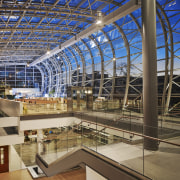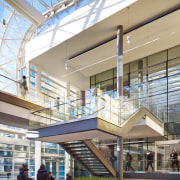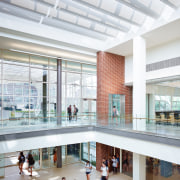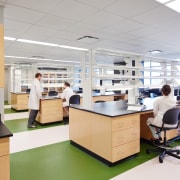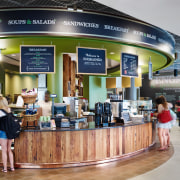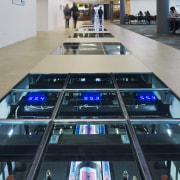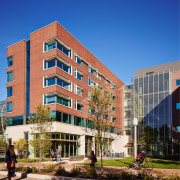Greenhouse to foster eco-friendly farming at the Institute of Environmental Sustainability, Loyola University Chicago
An integrated dormitory, academic facility and giant urban garden at the Institute of Environmental Sustainability, Loyola University Chicago
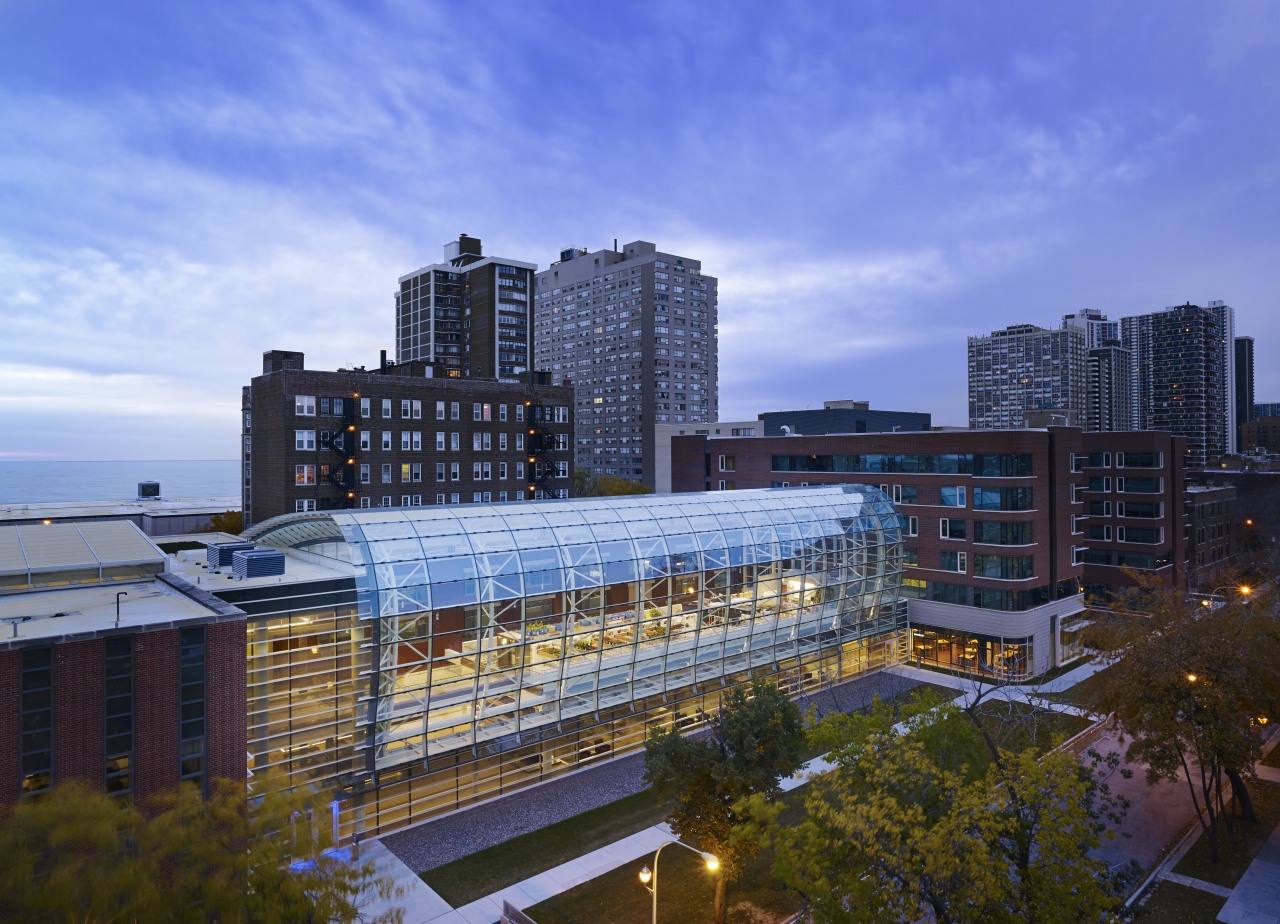
As the need for sustainable thinking ramps up, so too does the need to inspire engineering, agricultural, and science students to look hard to the future. And what better way to help them envisage a viable green world than by offering a living, operable example just outside the dormitory window or through a glass cutaway in the floor?
The Institute of Environmental Sustainability (IES)on the south side of Loyola University Chicago campus is all about real-life lessons. Designed by architect firm Solomon Cordwell Buenz with Devon Patterson and Jim Curtin as design principals, the integrated learning facility is a coming-together of green building strategies, planet-friendly energy use, eco-farming, indepth research and teaching laboratories, student housing and a social hub.
The 65,532m² complex integrates three building forms. There is an existing brick structure, BVM Hall, reworked as office, teaching and research facilities, and a central urban farm and laboratory under glass, known as the Ecodome. Bookending this is a new brick building San Francisco Residence Hall. Designed in harmony with nearby campus architecture, this building also runs along behind the dome, with some students having windows that open directly into it.
In terms of green building alone the LEED Gold-rated design is an object lesson for students. Before the facility went up, a geothermal system was laid down. Ninety-one wells plunge water to a depth of 152m to be heated or cooled by the earth's ambient temperature and sent back to the surface for energy reuse within the institute. This is not only the largest geothermal field of its kind in Chicago, it is also unusual for being directly under the floors of the academic structure a placement made necessary by the tight urban location. Glass floor panels allow students to see this eco-friendly strategy in operation first hand. Running LCD displays show the water's temperature as it descends and surfaces.

The Ecodome, looking a little like a giant's glass roll-top desk, is shaped to optimise passive ventilation rising hot air is drawn out of the top of the greenhouse, while computer-controlled vents allow cooler air to enter from below. This helps air flow through the space without mechanical assistance. The otherwise inoperable curving facade is also designed to maximise solar gain and collect and channel rainwater, as do the green roofs on the adjacent structures. The grey water is stored in an 11,356-litre underground cistern for irrigation of the aquaponic plants and fish tanks alongside. It also irrigates a living wall, one of two in the facility, that grows up the dormitory wall at the rear of the Ecodome. Students can not only open a window into the greenhouse from their room, taking in its warmth, they can also reach round and pluck a hop or flower, depending on the particular crop growing up the brickwork.
"The Ecodome is the iconic focal point of IES," says Patterson. "As well as a flexible learning lab, the space acts as a link between the residential, academic and social aspects of the institute."
Besides its prominent green strategies of passive ventilation, geothermal heating and rainwater harvesting, the integrated facility is a living example of cyclic green thinking in other ways, too.
"Add to these large-scale sustainable strategies such novelties as students living in the same building as the crop space they tend and a cafe with a menu that will incorporate some of what's grown in the building, and you have this closed-loop mentality," says Patterson.
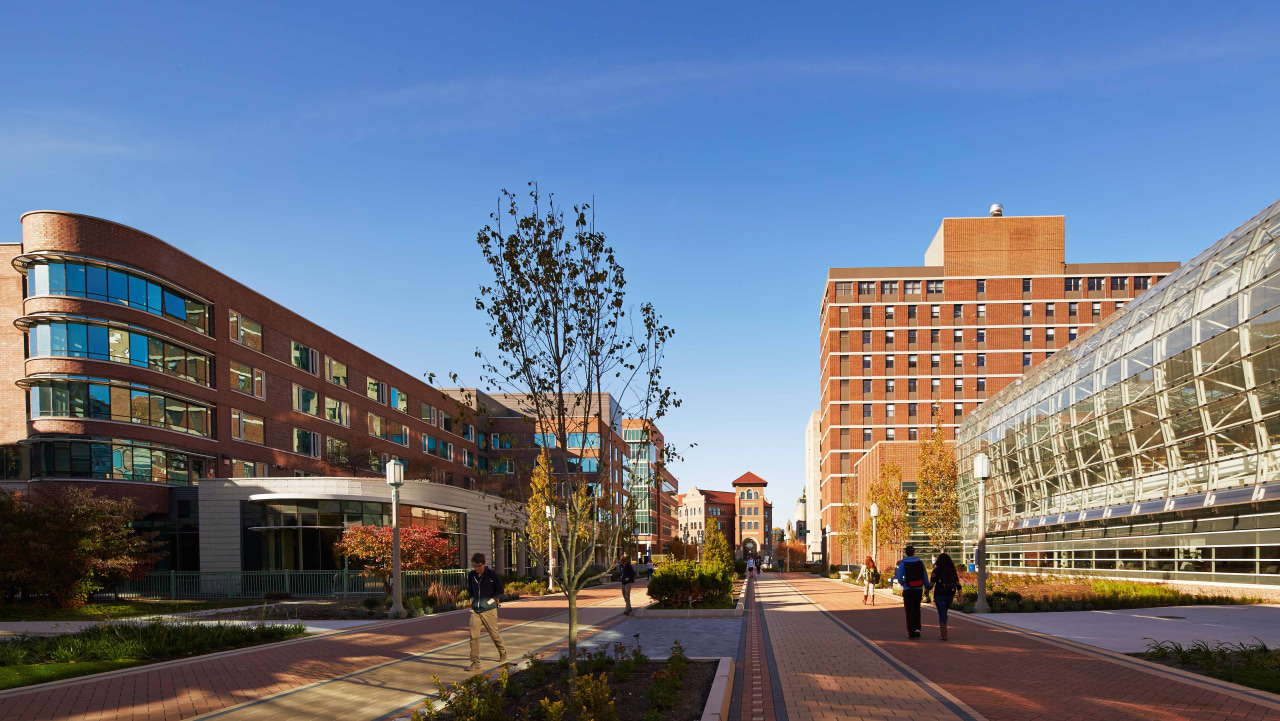
Another sustainability exercise dovetails with the institute's eco-friendly operation. The Clean Energy Program and Biodiesel Lab utilises waste products from campus dining facilities, creating 380 litres of biodiesel every three hours. In winter this is used to recharge the geothermal field. It is also used to fuel the campus shuttles, and extra fuel is sold off, as part of a certified green business.
The director of the Institute, Nancy Tuchman, says the university wanted a learning facility where students could learn many different skills, but also wanted the building itself to walk the talk.
"In other words, we wanted this to be the most environmentally and energy-efficient building that we could possibly achieve."
The IES figurehead for sustainable learning has more than fulfilled that goal and created a bold icon for the south side of the university at the same time.
Credit list
Project
Interior design
Civil engineer
Structural engineer
Landscaping
Cladding
Glazing
Columns
Wall treatments
Ceiling
Lighting
Architect
Construction company
Mechanical and electrical engineer
Climate
Laboratory
Roof
Hardware
Flooring
Paints
Veneers
Heating
Story by: Charles Moxham
Home kitchen bathroom commercial design
Homely, inviting – and lived in
Light-filled and harmonious
Nature infused
Commercial Design Trends Vol. 31/3
Commercial Design Trends is aimed at our professional readers, and showcases commercial buildings. The book features reg...
Read More

